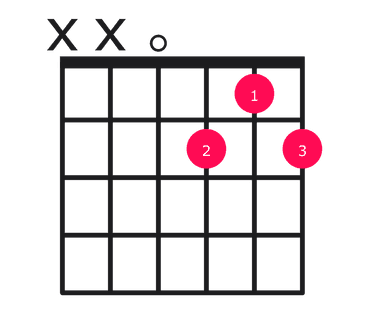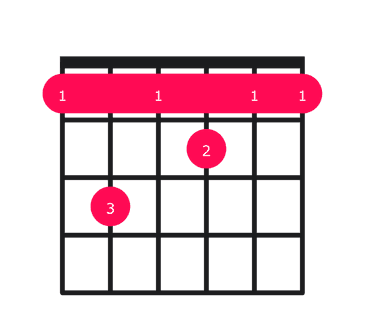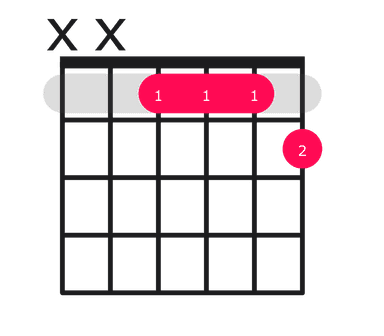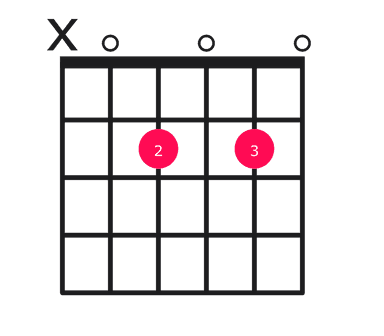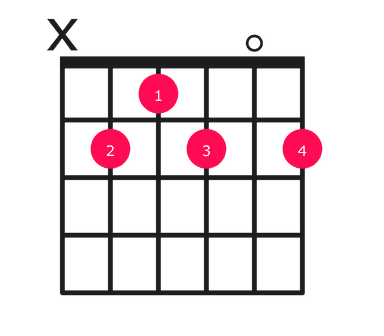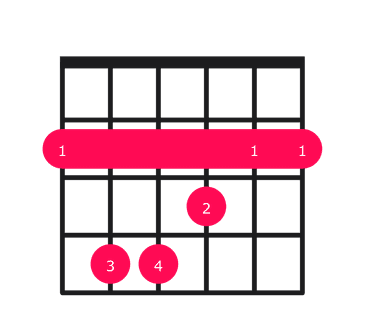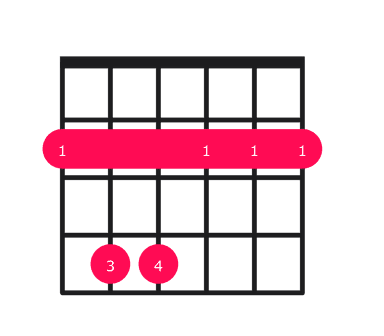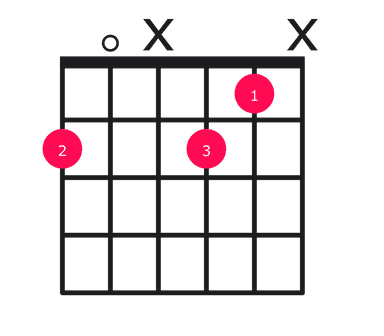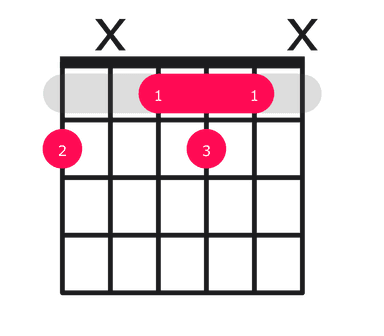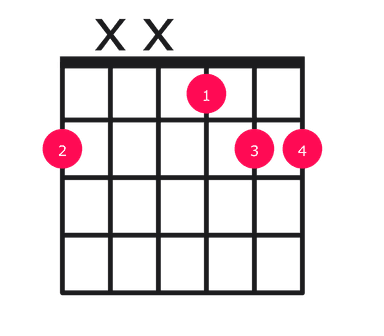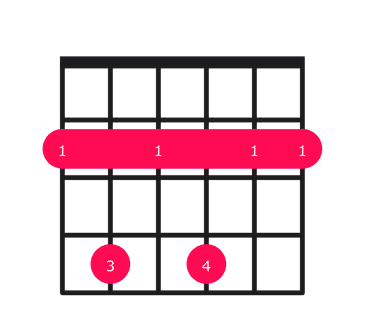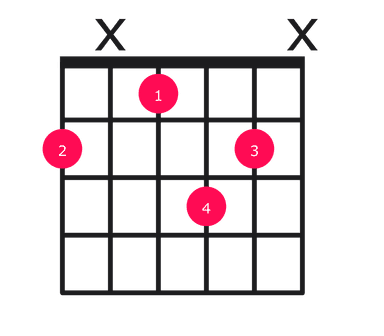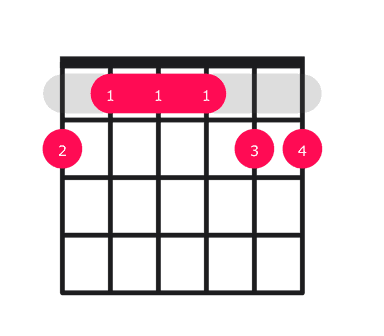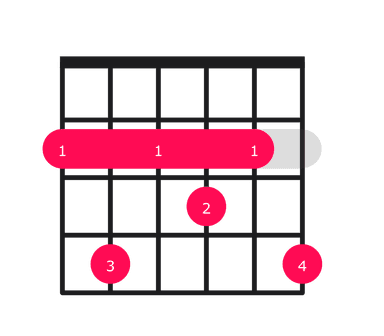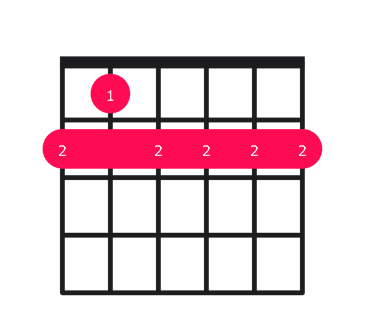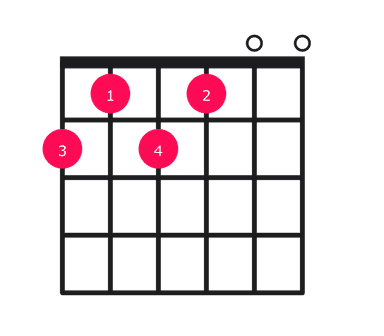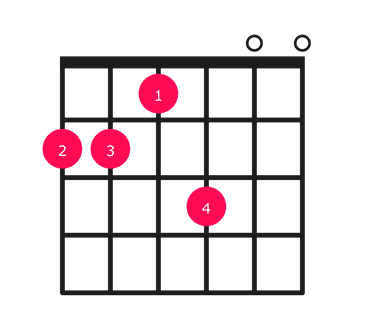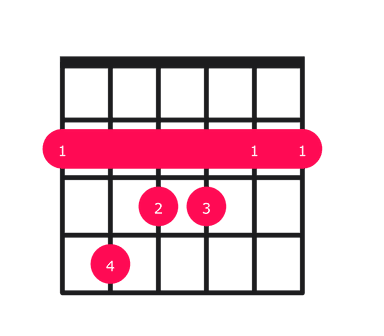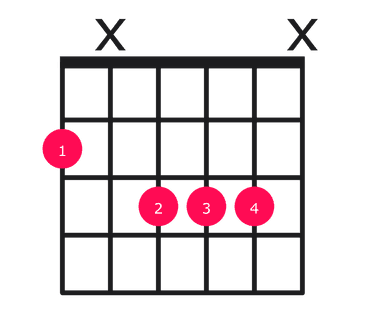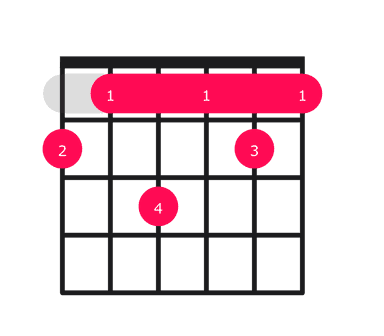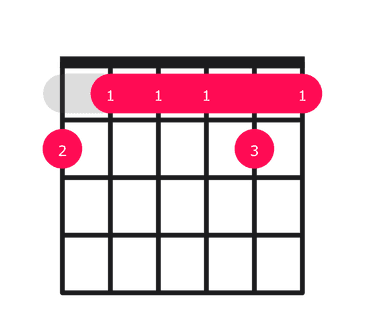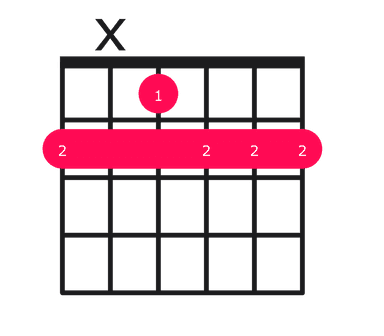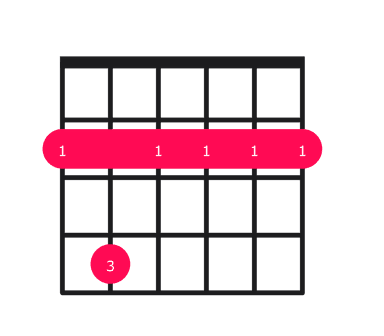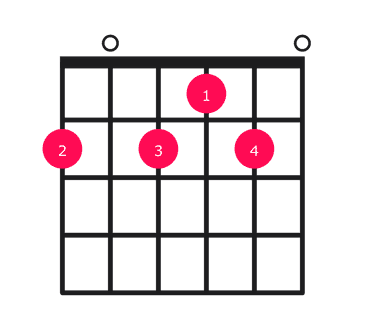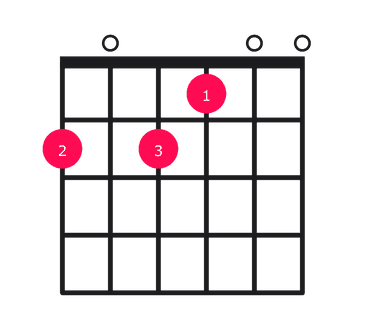How to play the F#7 chord on guitar
Learn to play the jazzy F#7 chord, featured in songs like "Birdland" and "Spain."
The F#7 chord
The F#7 chord, pronounced "F sharp dominant seventh," is a versatile chord that adds a bluesy, jazzy flavor to progressions. Notable for its sharp, edgy sound, the F#7 is often used in blues, jazz, and funk music to create tension and resolution. Mastering the F#7 chord opens up a world of exciting possibilities for spicing up your guitar playing across various genres.
There are many ways to play a chord. Here's a diagram for the most common F#7 chord. We've also included other versions below.

Unlock your playing potential in online guitar lessons with experts on Til. Start today and achieve your guitar goals quickly. Find a top-rated teacher.
Finger placement for F#7 chord
The F#7 chord is typically played as a barre chord on the 2nd fret of the guitar.
Follow these finger positions to play a F#7 chord on your guitar:
- Place your index finger across all six strings at the 2nd fret, creating a barre.
- Place your middle finger on the 3rd fret of the 3rd (G) string.
- Place your ring finger on the 4th fret of the 5th (A) string.
- Place your pinky finger on the 4th fret of the 4th (D) string.
To strum this chord, use your pick or thumb to play all six strings in a downward motion, ensuring that each string rings out clearly.
How to play an easy F#7 chord on guitar
If you're a beginner looking to play a simpler version of the F#7 chord, try this:
- Place your index finger on the 2nd fret of the 6th (low E) string.
- Place your middle finger on the 3rd fret of the 5th (A) string.
- Place your ring finger on the 2nd fret of the 3rd (G) string.
- Strum only these three strings.
How to play a F#7 bar chord
The F#7 barre chord is a versatile alternative to the standard F#7 chord, allowing you to easily transition between chords and play in different positions on the fretboard.
Here's how to play an F#7 barre chord:
- Place your index finger across all six strings at the 2nd fret, creating a barre.
- Place your middle finger on the 3rd fret of the 3rd (G) string.
- Place your ring finger on the 4th fret of the 5th (A) string.
- Place your pinky finger on the 4th fret of the 4th (D) string.
- Strum from the 6th (low E) string down to the 1st (high E) string.
Common F#7 chord progressions
The F#7 chord is often used to add a bluesy, jazzy, or funky flavor to chord progressions, creating a sense of tension and resolution. Some common chord progressions featuring the F#7 chord include:
- I - IV - F#7 - I (A - D - F#7 - A) Used in "Twist and Shout" and "La Bamba"
- I - vi - F#7 - V (A - F#m - F#7 - E) Used in "I Will Survive" and "Stand By Me"
- ii - V - I - F#7 (Bm - E - A - F#7) Used in "Fly Me to the Moon" and "Autumn Leaves"
- I - F#7 - IV - V (A - F#7 - D - E) Used in "Hound Dog" and "Johnny B. Goode"
- vi - F#7 - ii - V (F#m - F#7 - Bm - E) Used in "All the Things You Are" and "Cry Me a River"
Drills to master the F#7 chord
To master the F#7 chord, try this simple drill: play each note (F#, A#, C#, E) individually, focusing on clarity and tone. Once comfortable, play the notes together as a chord, strumming or plucking. Repeat this process slowly, gradually increasing speed as you build confidence.
Another effective drill is to practice transitioning to and from the F#7 chord. Choose a progression like F#7 to B7 to E7 and play each chord for a measure. As you improve, try more complex progressions and rhythm patterns to develop your skills.
Unlock your playing potential in online guitar lessons with experts on Til. Start today and achieve your guitar goals quickly. Find a top-rated teacher.
Ellie G.
"Everything about this class was just absolutely fantastic. If you are a passionate guitarist and you are up to a challenge or even just learn something new, than this is definitely the class for you! Don't think twice about it, take the class!"
Songs that feature the F#7 chord
Here are 10 popular songs you can play with the F#7 chord.
- Purple Haze by Jimi Hendrix (E7, G, A, F#7)
- 25 or 6 to 4 by Chicago (Am, F, Dm7, F#7)
- Maria Maria by Santana featuring The Product G&B (Dm7, F#7, E7)
- Birdland by Weather Report (Dm7, G7, C7, F#7)
- Chameleon by Herbie Hancock (F#7)
- Spain by Chick Corea (G, F#7, Em, F#7)
- Oye Como Va by Santana (Am7, D7, F#7)
- Aja by Steely Dan (F#7, C#7, F#m7, B7, E)
- Giant Steps by John Coltrane (B, D7, G, Bb7, Eb, Am7, D7, F#7, B, F#7)
- Roundabout by Yes (E, C#m7, F#7, B7sus4, E, C#m7, A, E)
How a guitar teacher can help
If you feel stuck in your playing, it might help to take personalized guitar lessons with an expert guitarist. Taking lessons with a pro gives you access to the skills, feedback, and motivation to reach your goals.
You can find expert guitar teachers to support you in the journey. Thousands of people have turned to online guitar lessons on Til, instead of traditional in-person lessons, because Til gives you access to the best teachers in the world from the comfort of home. And with flexible scheduling, secure payments, lesson recordings, and a private chat with your teacher–there’s never been a better way to learn guitar.


